Instructive astronomy items
All our products are made for teaching people, in particular youngsters, about astronomy.
All can be provided as a customised version, in any language.
Besides planispheres Rob Walrecht Productions publishes a number of other products. These are highly instructive 'build-it-yourself' instruments and models.
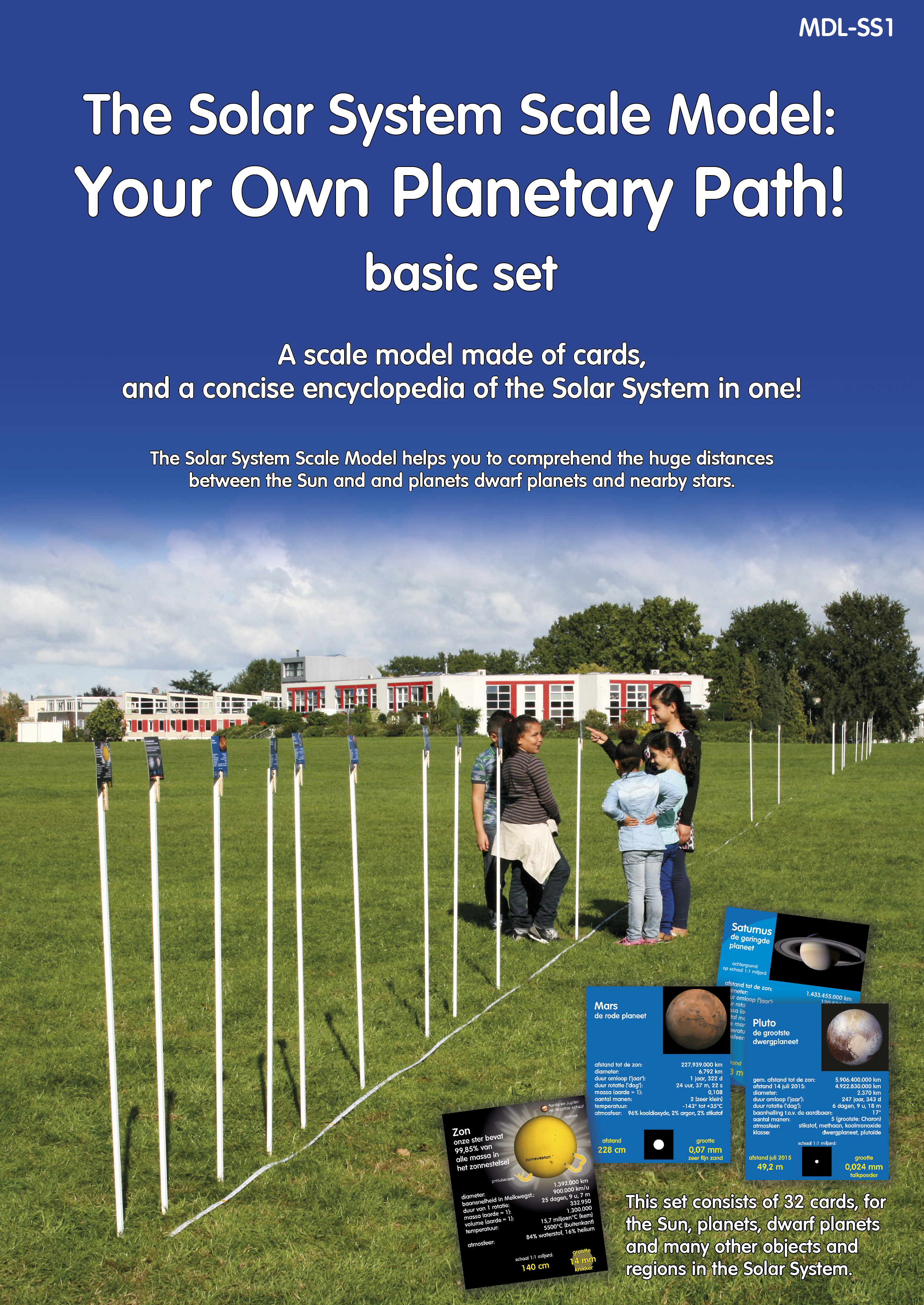 Scale model of the Solar System
Scale model of the Solar System
One of these is the unique
Solar System scale model (cards for all Solar System objects with which
you can create your own Planet Walk).
This will be available in English soon now!
Two models to learn about celestial mechanics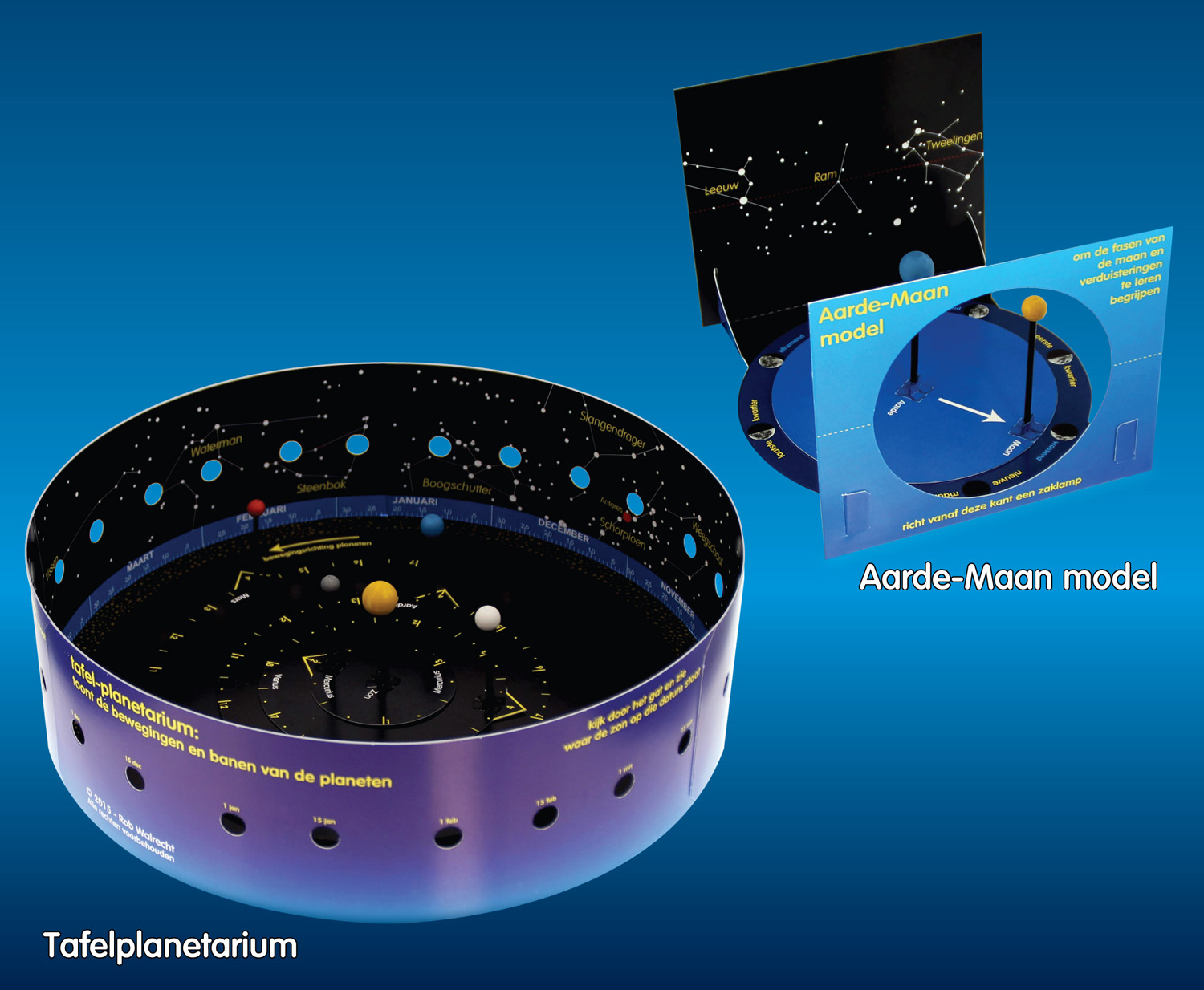
Another 'flagship' is the new
Astroset Maan en Planeten (Astroset Moon & Planets), which currently only available in Dutch. However, there is an
English User Guide and
Building Instructions for this Astroset on
this page.
'Build-it-yourself' star wheel and sundial
But the two simplest and cheapest BIY instruments are the following.The two 'build-it-yourself' tools - the star wheel and the sundial - are both easy to make and easy to understand.
Size A3 (30 x 42 cm) with a folding line to be able to fold it to half that size.
Our modern designs have only been published in
Dutch models so far, but customised products may be in that style (the Sundial will be in full colour when reprinted):
-
The star wheel, a simpler version of the planisphere, with less objects and without the coordinates (click this link and scroll down to item STW-40 and/or STW-50). Available as standard product for 40° and 50° N;
-
The sundial:a very simple and thus instructive design, that is meant to enhance the understanding of the time we daily use (click this link and scroll down to item SDL-50). Available as standard product for 50° N.
-
NEW: the BIY quadrant: an ancient instrument to measure angles, i.e. heights of stars above the horizon.
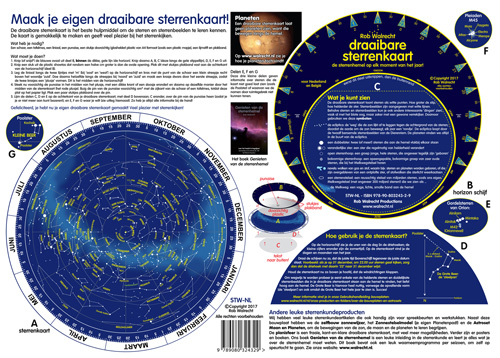
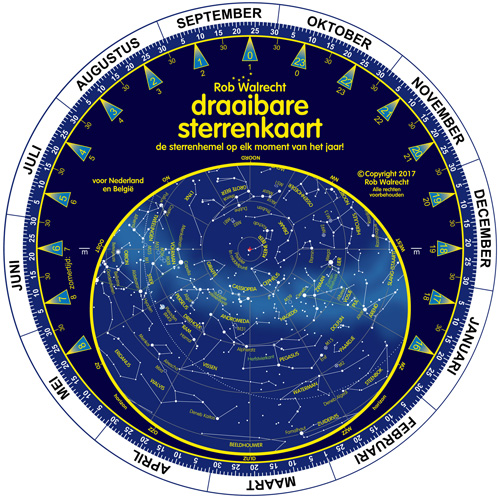 Above, left: the Dutch BIY Star Wheel; right: as the build Star Wheel looks like.
Above, left: the Dutch BIY Star Wheel; right: as the build Star Wheel looks like.
Below, left: the Dutch BIY Sundial; right: as it looks like when built.
Bottom: the new BIY quadrant.
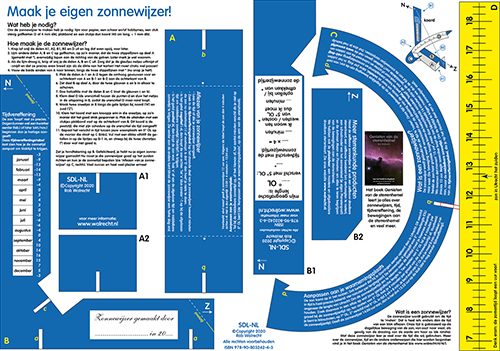
.jpg)
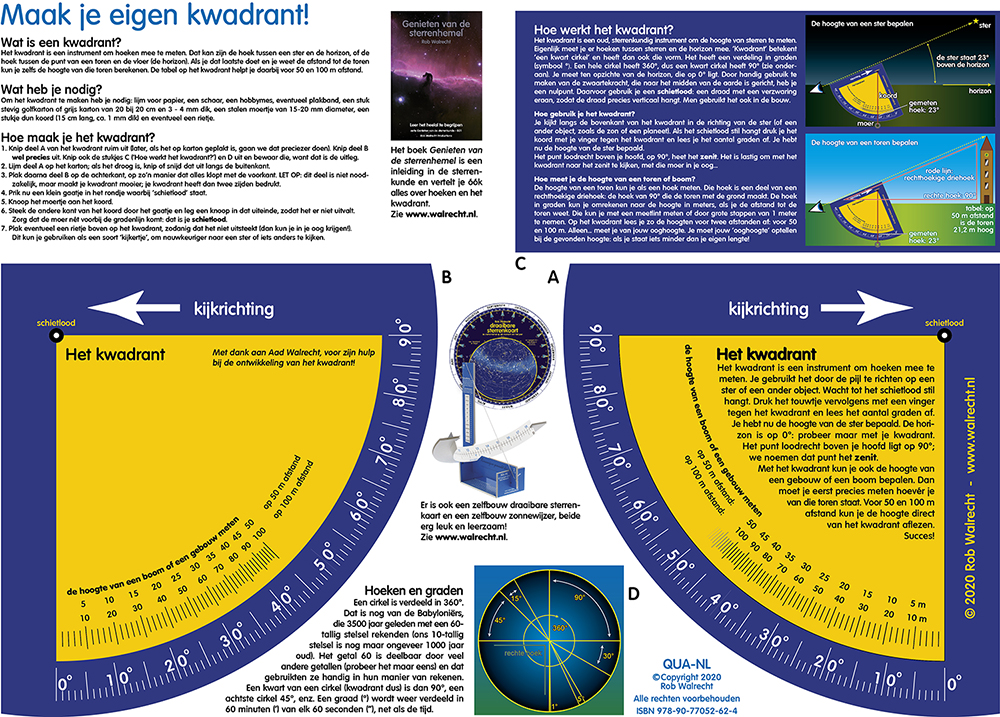
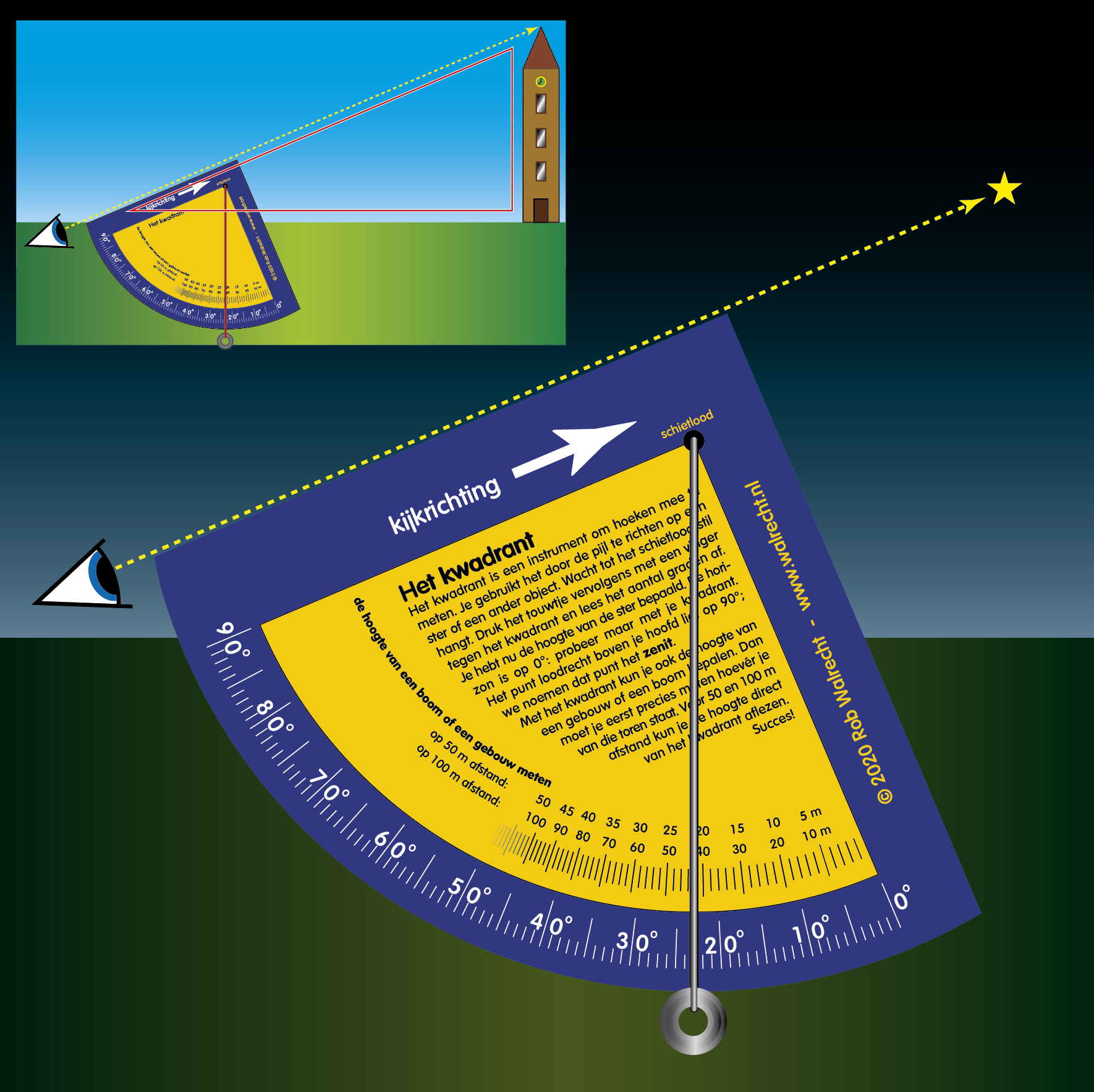

 Scale model of the Solar System
Scale model of the Solar System



.jpg)

